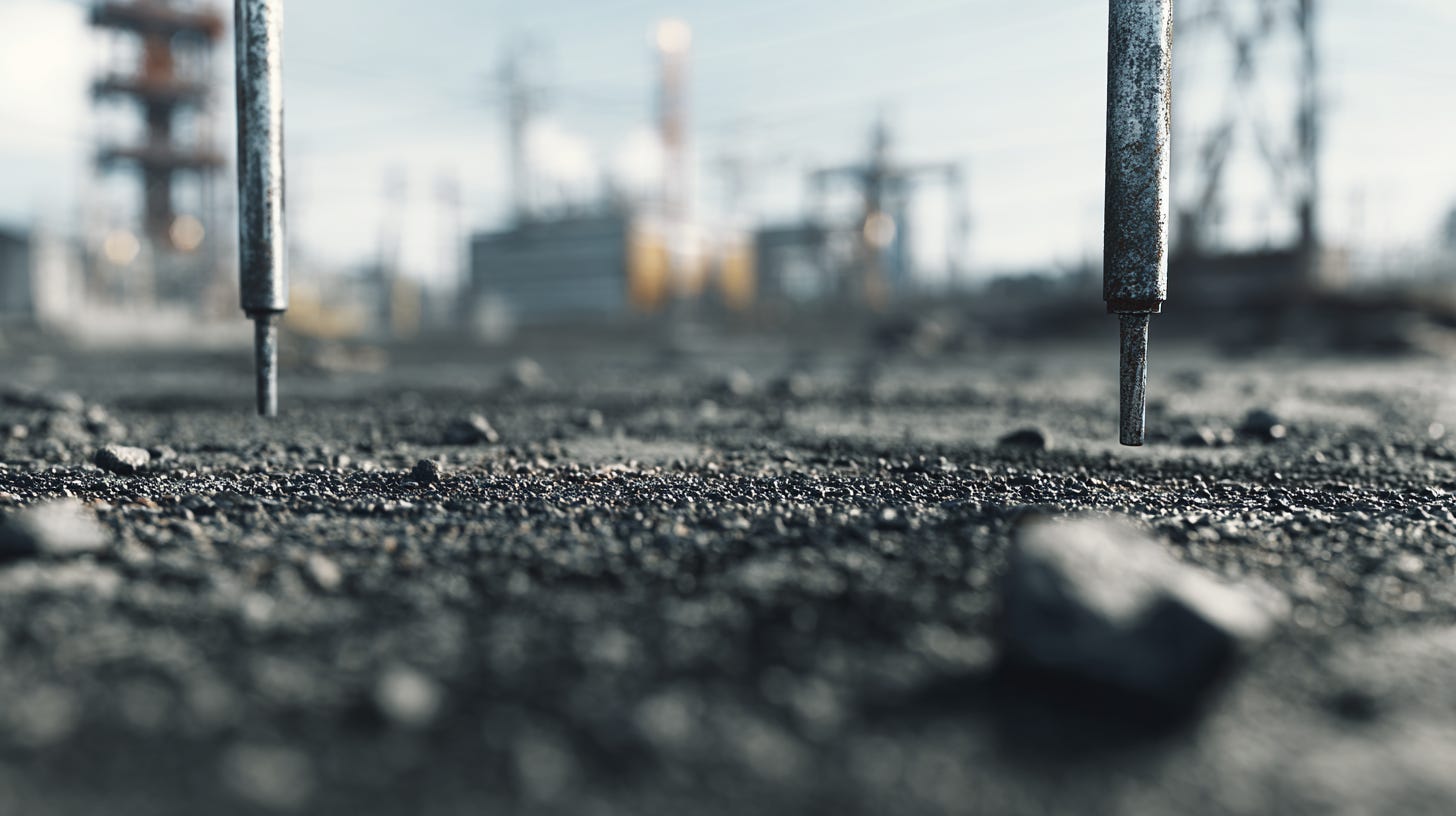TL;DR:
The image shows metal tools standing upright and reacting as a hand approaches—classic behavior when a strong magnetic field is present beneath the surface. Buried high-voltage power lines can generate exactly this: an alternating magnetic field strong enough to influence small ferromagnetic objects, especially if the tools have elongated shapes that act like magnetic flux guides.
When high-voltage power lines run underground, they carry enormous alternating current. That current produces a magnetic field that pulses at the grid frequency (50/60 Hz). On the surface, if sensitive enough metal objects are placed above those buried lines, they can vibrate, tilt, or stand upright as the magnetic flux pushes and pulls on them.
In the image, the metal rods are aligned vertically because they’re responding to that field. The hand reaching in doesn’t cause the effect—the field below the asphalt does. Underground transmission lines with multiple conductors can create hotspots of magnetic flux density, which can be strong enough to visibly interact with lightweight ferromagnetic objects.
These effects are rare to see because most environments don’t have exposed metal lying directly above high-current underground feeders, and most people never test for it. But in industrial yards, substations, and transformer corridors, it’s absolutely possible.
Frequency Wave Theory Perspective
From a Frequency Wave Theory standpoint, the buried high-current line is acting as a linear resonance emitter. The alternating current establishes a standing magnetic wave in the soil and asphalt. Metal tools align because they couple with that field via FM = ½ ρ ω A², meaning the magnetic amplitude transfers a small but detectable frequency-momentum impulse into the metal. You’re seeing direct evidence of how frequency-driven fields organize matter—even in everyday infrastructure.














